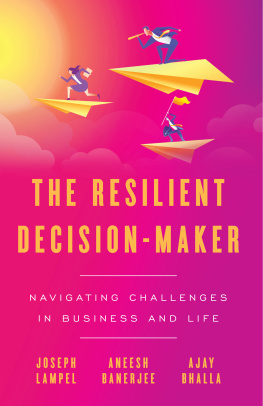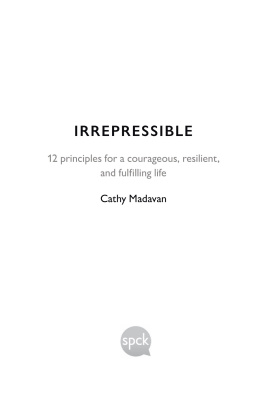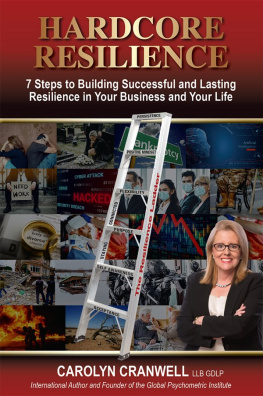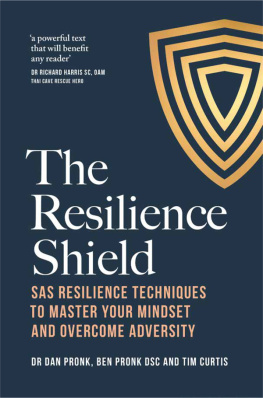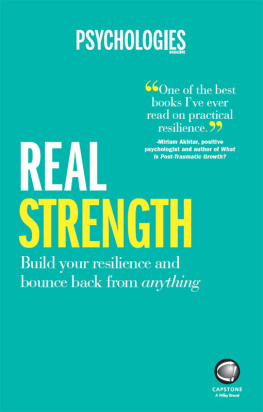Jol Glenn Brenner , The Emperors of Chocolate: Inside the Secret World of Hershey and Mars (New York: Random House, 1999).
.
Fred Luthans, The Need for and Meaning of Positive Organizational Behaviour, Journal of Organizational Behavior 23, (2002): 702.
Ellen E. Kossek and Matthew B. Perrigino, Resilience: A Review Using a Grounded Integrated Occupational Approach, Academy of Management Annals 10, no. 1 (2016): 730.
Ernesto Caffo and Carlotta Belaise, Psychological Aspects of Traumatic Injury in Children and Adolescents, Child and Adolescent Psychiatric Clinics of North America 12, no. 3 (July 2003): 493535.
.
Cary L. Cooper and Philip Dewe, Stress: A Brief History (Oxford: Blackwell, 2004).
Monideepa Tarafdar, Cary L. Cooper, and Jeff Stich, The Technostress TrifectaTechno Eustress, Techno Distress and Design: Theoretical Directions and an Agenda for Research, Information Systems Journal 29, no. 1 (2019): 642.
James D. McMahon Jr., Built on Chocolate: The Story of the Hershey Chocolate Company (Los Angeles: General Publishing Group, 1999).
M. S. Hershey Dead; Chocolate King, 88, New York Times , October 14, 1945, 44.
).
Howard Schultz and Dori Jones Yang, Pour Your Heart into It: How Starbucks Built a Company One Cup at a Time (New York: Hyperion Books, 1997), 92.
Stevan E. Hobfoll, Conservation of Resources: A New Attempt at Conceptualizing Stress, American Psychologist 44, no. 3 (March 1989): 513524.
Stevan E. Hobfoll, Jonathon Halbesleben, Jean-Pierre Neveu, and Mina Westman, Conservation of Resources in the Organizational Context: The Reality of Resources and Their Consequences, Annual Review of Organizational Psychology and Organizational Behavior 5, no. 1 (2018): 103128.
Christopher J. Anderson, The Psychology of Doing Nothing: Forms of Decision Avoidance Result from Reason and Emotion, Psychological Bulletin 129, no. 1 (2003): 139167.
Samina Karim, Timothy N. Carroll, and Chris P. Long, Delaying Change: Examining How Industry and Managerial Turbulence Impact Structural Realignment, Academy of Management Journal 59, no. 3 (2016): 791817.
Paul C. Nutt, Expanding the Search for Alternatives during Strategic Decision-Making, Academy of Management Executive 18, no. 4 (November 2004): 1328.
Nutt, 14.
.
DG Fowlie and Mark O. Aveline, The Emotional Consequences of Ejection, Rescue, and Rehabilitation in Royal Air Force Aircrew, The British Journal of Psychiatry , 146 (1985): 609613.
Herminia Ibarra, Intels Andy Grove and the Difference between Good and Bad Fear, Financial Times , April 11, 2016.
.
Joseph Lampel and Daniel Ronen, Arnold Schwarzenegger (A): Strategy or Sheer Willpower? in The Strategy Process: Concepts, Contexts, Cases, 5th ed., ed. Joseph Lampel, Henry Mintzberg, James Brian Quinn, and Sumantra Ghoshal (London: Pearson Education, 2014), 582586.
Joseph Lampel, Marlon Koerner, and Hugh Cameron, Strix Technology in China (working paper, Alliance Manchester Business School, University of Manchester, 2017).
Jonathan Cott, Interview with Leonard Bernstein, Rolling Stone , November 29, 1990.
Warren Bennis and Patricia W. Biederman, Organizing Genius: The Secrets of Creative Collaboration (London: Nicholas Brealey Publishing, 1998).
Klodiana Lanaj, Peter H. Kim, Joel Koopman, and Fadel K. Matta, Daily Mistrust: A Resource Perspective and Its Implications for Work and Home, Personnel Psychology 71, no. 4 (2018): 126.
Hctor Tobar, Sixty-Nine Days: The Ordeal of the Chilean Miners, New Yorker , July 7, 2014.
Walter Isaacson, Benjamin Franklin: An American Life (New York: Simon & Schuster, 2003).
Albert J. Bernstein, Emotional Vampires at Work: Dealing with Bosses and Coworkers Who Drain You Dry (New York: McGraw-Hill, 2013).
Andrew Roberts, Hitler and Churchill: Secrets of Leadership (London: Weidenfeld and Nicholson, 2003).
.
Betsy Morris, The Accidental CEO, Fortune , June 23, 2003, 58.
Morris, CEO, 58.
.
.
Steven Pinker, Enlightenment Now: The Case for Reason, Science, Humanism, and Progress (New York: Penguin, 2018).
Glen Newey, The Routledge Guidebook to Hobbes Leviathan (Oxford: Routledge, 2014).
Copyright 2019 Joseph Lampel, Aneesh Banerjee, Ajay Bhalla
All rights reserved.
The Resilient Decision-Maker
Navigating Challenges in Business and Life
ISBN 978-1-5445-0412-4

Dedications
Joseph: For Estelle
Aneesh: For Divya
Ajay: For Khushi, Arya, and Raghuvir
Introduction
Milton is twenty-nine. He is penniless.
In his short life to date, Milton has tried to build two businesses. Both have failed miserably. With two disastrous ventures at his back, he has been forced to declare bankruptcy. His credibility is in the gutter. His family, who have previously stood by him, are no longer willing to lend him more money or support him in any further entrepreneurial schemes.
Although Milton is not one to give up, at times it must seem to him that failure runs in his family. His father, Henry, is also an aspiring entrepreneur with a list of failures that easily dwarfs Miltons. Henry has failed in business no fewer than seventeen times. Following each failure, Henry has uprooted his family and moved to a new city to try again. The dashed hopes and constant turmoil have taken their toll on the family: Miltons parents have separated, and his father has abandoned the family in pursuit of elusive success.
What do you think of Milton at this point? Maybe youve already decided that he is a poor decision-maker with an unrealistic view of his own abilities. Perhaps he should curb his ambition and settle for a steady job and a life plan more suited to his talents. If thats your assessment, who would blame you? Given his litany of missteps and setbacks, Milton would arguably be lucky to attain even that much success.
In fact, Milton did try to find steady employment, but he did not settle for the quiet life. While he was trying new businessesand failing repeatedlyhe was also observing and learning. In due course, he established the Hershey Chocolate Company and never looked back. In 2018, more than seventy years after his death, the firm that bears his name still maintains a market cap of $20 billion and a 30 percent market share in its sector. Today, one can purchase Hersheys chocolate in myriad forms: the famous Hershey bar, Hersheys Kisses, Twizzlers, Reeses Peanut Butter Cups, and dozens more varieties.
If failure challenged Milton Hershey in one way, his initial taste of success presented him with a different test. His first successful company was, in fact, a caramel company. He could have stopped right there and enjoyed the life of a prosperous businessman, but he wanted to go further. To the consternation of his friends and family, he decided to sell the caramel company and focus his energies on creating the milk chocolate bar. In explaining his decision, he famously commented that caramels are just a fad, but chocolate is a permanent thing.
In Hersheys time, chocolate was expensive to produce and had a short shelf life. He wanted to challenge the industry belief that chocolate was inevitably the preserve of the upper classes by making it affordable and available to people from all walks of life. This required him to develop a new formula and overcome numerous production problems. Eventually, however, after much trial and error, Hershey succeeded in pioneering what has become one of the most popular foods on the planet.
Next page
